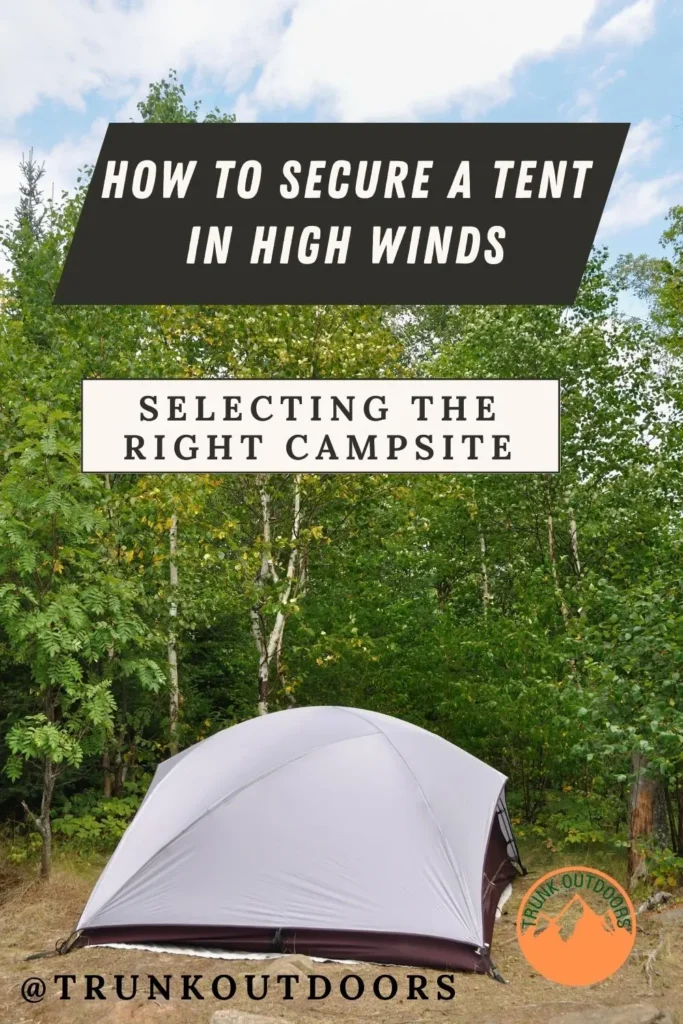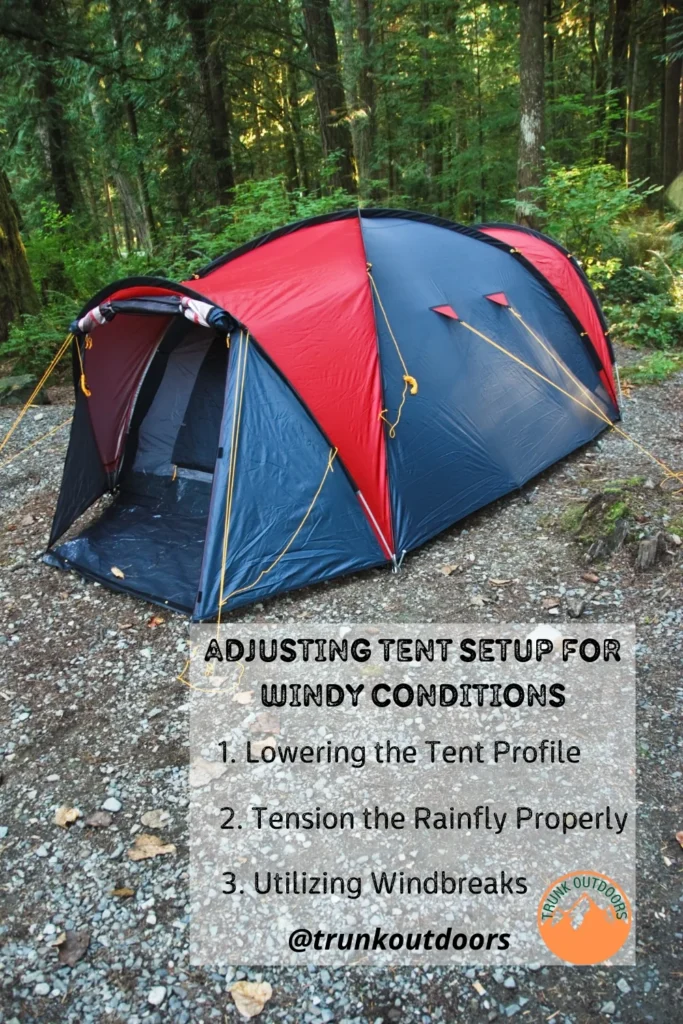How to Secure a Tent in High Winds
Windy conditions while camping can be challenging, as strong gusts of wind may damage or blow away your tent.
Understanding wind’s impact and following guidelines can greatly enhance the stability and security of your camping shelter.
In this article, we’ll explore effective strategies and techniques to secure a tent in high winds for a safe and comfortable camping experience.
Understanding Wind and Its Impact on Tents
Before diving into the techniques to secure a tent, it is important to comprehend the influence of wind on tents. Windy conditions can pose certain challenges and risks. Here are some ways in which wind can impact tent camping:
- Stability: Strong winds can put your tent’s stability at risk. Gusts of wind can cause the tent to sway or even collapse if not properly secured.
- Noise: Wind can create a constant rustling or flapping noise, which may disrupt your sleep or overall camping experience.
- Dust and Debris: In windy conditions, dust, sand, or debris may enter your tent, compromising your comfort.
- Safety: In extreme cases, heavy winds can pose safety hazards during tent camping.
Choosing a Suitable Tent for Windy Conditions
Selecting a tent specifically designed for windy weather is crucial. Look for tents that are labeled as “four-season” or “high-wind resistant.” These tents are typically sturdier, feature stronger poles, and have a more streamlined design to minimize wind resistance.
Here are a few tent options that are known for performing well when camp in windy conditions :
- The North Face Mountain 25: This tent is designed to withstand extreme weather conditions, including high winds. It features a geodesic dome design, sturdy poles, and a durable flysheet to provide excellent wind resistance.
- Hilleberg Nallo: Hilleberg is renowned for producing high-quality tents, and the Nallo model is a popular choice for windy environments. It offers a robust construction, strong pole system, and a low-profile design that reduces wind resistance.
- MSR Hubba NX: The Hubba NX series from MSR is known for its lightweight design and exceptional wind resistance. These tents feature a solid pole system and a streamlined shape that helps them withstand gusty winds without compromising stability.
- Big Agnes Copper Spur HV UL: This tent combines lightweight materials with a robust design to handle windy conditions. It has a sturdy pole structure, guy lines for added stability, and a durable rainfly to protect against wind and rain.
Selecting the Right Campsite

The choice of campsite plays a significant role in securing your tent against high winds. Here are some tips to help you select the ideal campsite and avoid potential issues:
- Seek Natural Windbreaks: Look for campsites that offer natural windbreaks, such as hills, trees, or large rocks. These features can provide significant protection against strong winds.
- Avoid Exposed Areas: Stay away from open, exposed areas like hilltops, ridges, or wide-open fields. These areas are more susceptible to strong gusts of wind and can make your tent unstable.
- Consider Terrain and Topography: Opt for campsites situated in sheltered valleys or areas surrounded by natural barriers. These location features can act as wind buffers, reducing the impact of strong winds.
When selecting a campsite near trees during windy conditions, be cautious of potential dangers from falling branches.
Pitching your Tent in The Wind
To enhance the stability of your tent in high winds, it is important to prepare it appropriately. Here are some essential steps to take:
Anchoring the Tent
Securely anchoring your tent is vital to prevent it from lifting or shifting during strong winds. Use tent stakes to anchor the corners and guylines, ensuring they are driven deep into the ground. Consider using longer and stronger stakes designed for windy conditions.
Using Guy Lines and Stakes
Utilize the guy lines provided with your tent, attaching them to the designated loops or tie-down points. These lines help distribute the tension across the tent, making it more resistant to wind forces. Drive the stakes into the ground at a 45-degree away from the tent, maximizing their holding power.
Utilize Additional Guy Lines
In extreme wind conditions, it’s advisable to reinforce your tent with additional guy lines. These lines create extra support and help distribute the force of the wind more evenly. Attach them to the tent’s guy line points and secure them to nearby trees or rocks, ensuring they are taut but not too tight.
Reinforcing Tent Poles
Inspect your tent poles and ensure they are in good condition before your camping trip. Consider reinforcing them with duct tape or splinting them with extra poles or sticks for added stability. Reinforced poles are less likely to collapse or bend under high winds.
Positioning the Tent Properly
Properly positioning your tent is another crucial factor in securing it against high winds. Orient the tent so that the narrowest side faces the direction of the prevailing wind. This reduces the surface area exposed to the wind, minimizing the impact on the tent.
Adjusting Tent Setup for Windy Conditions

When camping in windy conditions, it is necessary to make some adjustments to your tent setup. Here are a few techniques to enhance wind resistance:
Lowering the Tent Profile
Lowering the tent profile helps reduce wind resistance. If your tent has adjustable height settings, choose the lower option. This lowers the center of gravity, making the tent less susceptible to gusts of wind.
Tension the Rainfly Properly
The rainfly is a protective cover that adds an extra layer of defense against wind and rain. To ensure maximum security, make sure to properly tension the rainfly. Pull it tightly and secure all attachment points to prevent flapping and reduce the risk of wind damage.
Utilizing Windbreaks
Set up additional windbreaks near your tent to shield it from direct gusts. Natural windbreaks like trees or shrubs can be effective, but you can also create artificial windbreaks using tarps or walls made from camping gear. Position them strategically to divert wind away from your tent.
Additional Tips to Secure a Tent in High Winds
Apart from the core strategies mentioned above, here are some additional tips to ensure a secure camping experience in high winds:
Storing Gear Properly
Store your camping gear in appropriate places to prevent it from becoming projectiles during high winds. Secure loose items inside your tent or store them in sealed containers to avoid damage or loss.
Monitoring Weather Conditions
Stay vigilant about the weather forecast and wind conditions during your camping trip. If severe weather or high winds are expected, consider postponing your trip or finding a more sheltered location. Being aware of changing weather patterns allows you to take proactive measures to protect yourself and your tent.
Being Prepared for Wind Gusts
While securing your tent is crucial, it is also important to be prepared for sudden wind gusts. Keep essential items close, have an emergency shelter plan, and ensure your tent has durable zippers and fastenings.
FAQs
-
What wind speeds are considered dangerous for tents?
High wind speeds above 30 mph (48 km/h) can pose a significant risk to tents. However, the specific threshold may vary depending on the tent’s design, quality, and the materials used.
-
Can I use heavier objects to secure my tent in high winds?
While it may be tempting to use heavy objects like rocks or logs, it’s generally not recommended. They can cause damage to your tent or pose a safety hazard if they become dislodged. Properly staking and using guy lines are the most effective methods for securing your tent.
-
How do I know if my tent is securely anchored?
A securely anchored tent will have taut guy lines and stakes driven deep into the ground. Perform a gentle tug test on the tent to ensure it remains firmly in place.
-
Are there any signs of an insecure tent in high winds?
Yes, there are several signs that indicate an insecure tent in high winds. These include excessive flapping of the rainfly or tent fabric, loose or dislodged stakes, sagging guy lines, or a tent that feels unstable. Address these issues immediately to prevent potential damage or collapse.
-
How can I minimize the noise caused by flapping tent fabric in the wind?
To reduce the noise caused by flapping fabric, ensure your tent is properly tensioned. Secure all attachment points tightly and use guy lines to distribute the force of the wind. Additionally, consider using fabric clips or clothespins to secure loose fabric to the tent frame.
Conclusion
Camping in high winds requires careful planning and preparation to ensure the safety and security of your tent.
Selecting the right tent, finding a suitable campsite, and implementing techniques such as anchoring, using guy lines, and adjusting the tent setup can greatly improve your tent’s resistance to high winds.
Remember to stay informed about the weather conditions and take necessary precautions to enjoy a comfortable and secure camping experience.